Math and Computing in Adinkra
Adinkra are symbols used in a stamped cloth process in Ghana. There are dozens of different Adinkra symbols. We begin by interviews of local artisans to find out what math and computing concepts already exist in Adinkra traditions: here are examples with links to the simulations.
1. Log spirals in stamp geometry: The objects in nature that Adinrka symbols represent include ram's horns, bird body shapes and other structures showing logarithmic spirals. Most importantly one of the symbols--showing knuckles clutching paired spirals--represents spiritual power (fist) holding life (spirals). In otherwords, they have abstracted from observations of log spirals as particulars to a general principle of log growth in organic life: the essence of science.



2. Transformational geometry in stamps:
reflection, scaling, translation and rotation are all named by artisans. Thus indigenous terms for these effects can be used in classroom lessons.

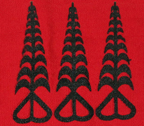


3. Algorithms in stamp sequences: experienced adinkra experts will minimize the number of times they have to switch stamps (so there is less ink wasted and a better feel to the work). Other aspects use modular arithmatic to balance repeition with variety.
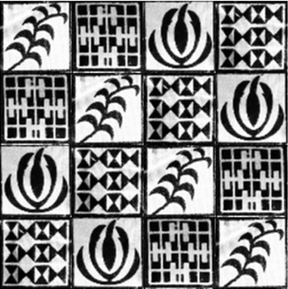
Evaluating Simulations based on Indigenous Knowledge in STEM ed
Once we understand the math and computing "translated" from an indigneous perspective, we can create simulations that reflect indigenous knowledge. These show statistically significant increase in STEM skills and interest in controlled studies.
Simulating log spirals in adinkra:
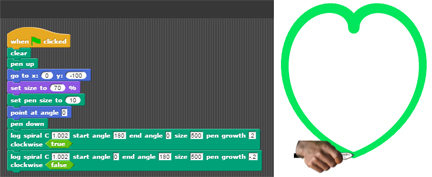
Simulating transformational geometry in adinkra:
Simulating stamping in adinkra:
From Simulations to 3D Stamps
Once children have created their simulations, these can be physically rendered either with 3D printing or by printing on paper, gluing to foam and cutting by hand.
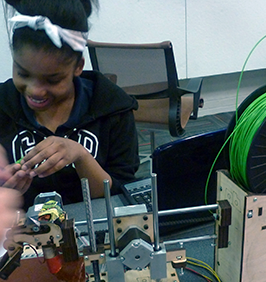

Once either has been done, children then use paint or ink to stamp their design on tee shirts, hats, etc.
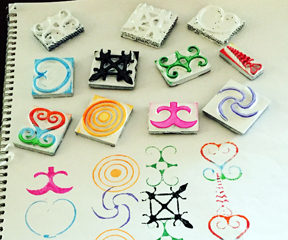
Adinkra Computing: CSDTs unplugged, and raspberry PI + e-waste.
One challenge for African classrooms is the lack of computers. Here are two solutions:
1. CSDTs unplugged. We create physical block sets, and hire artisans to create miniature stamps and diluted ink. The students create algorithms with the block sets, and then predict the outcome with the stamps. The one computer in the room can be used to check their answer.

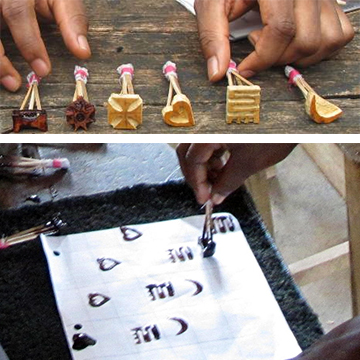
2. E-waste to makerspace. The EW2MS project helps students take parts from trashed machines. In ghana this was used in combination with Raspberry Pi's that were loaded with CSDTs.